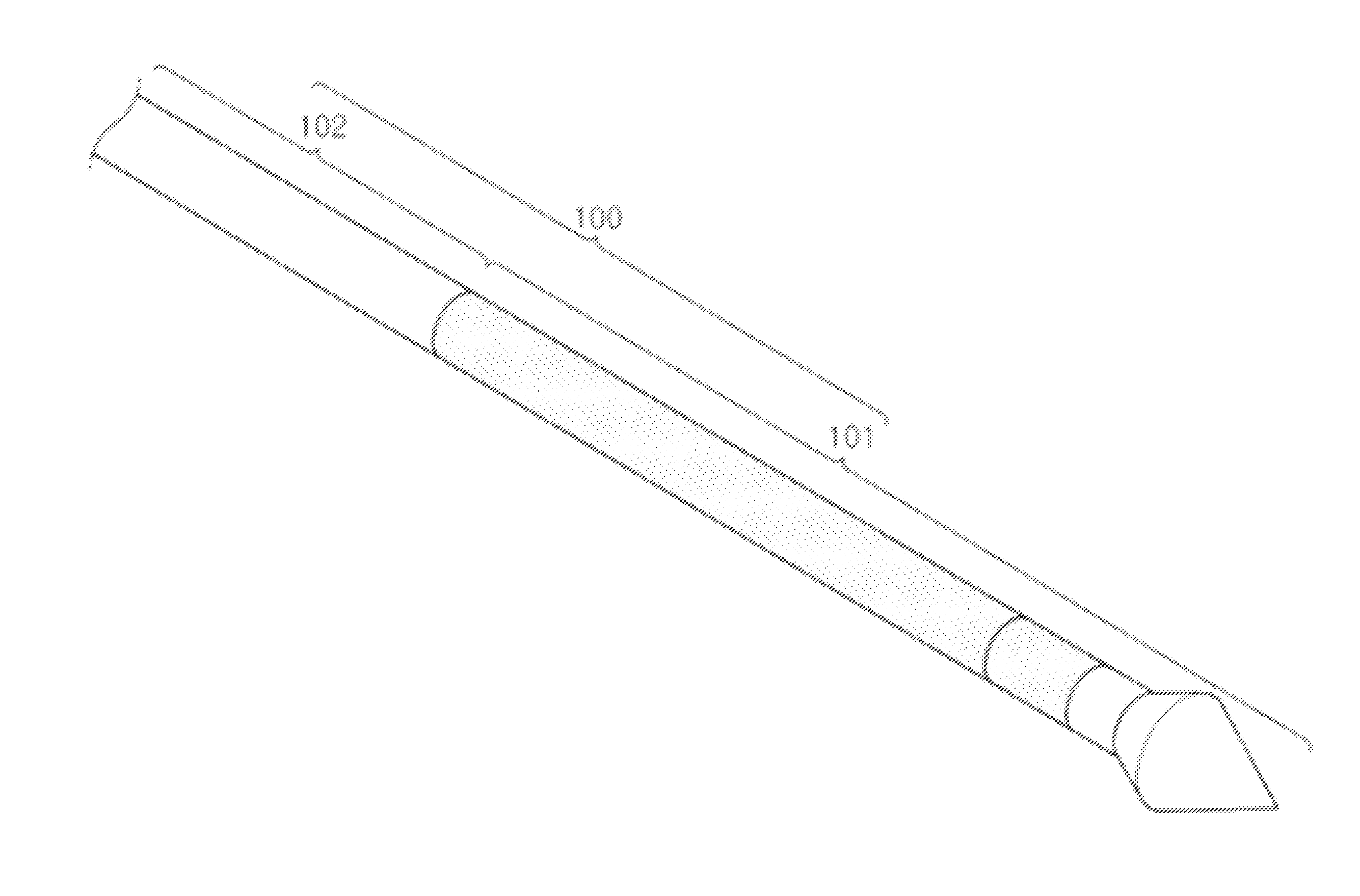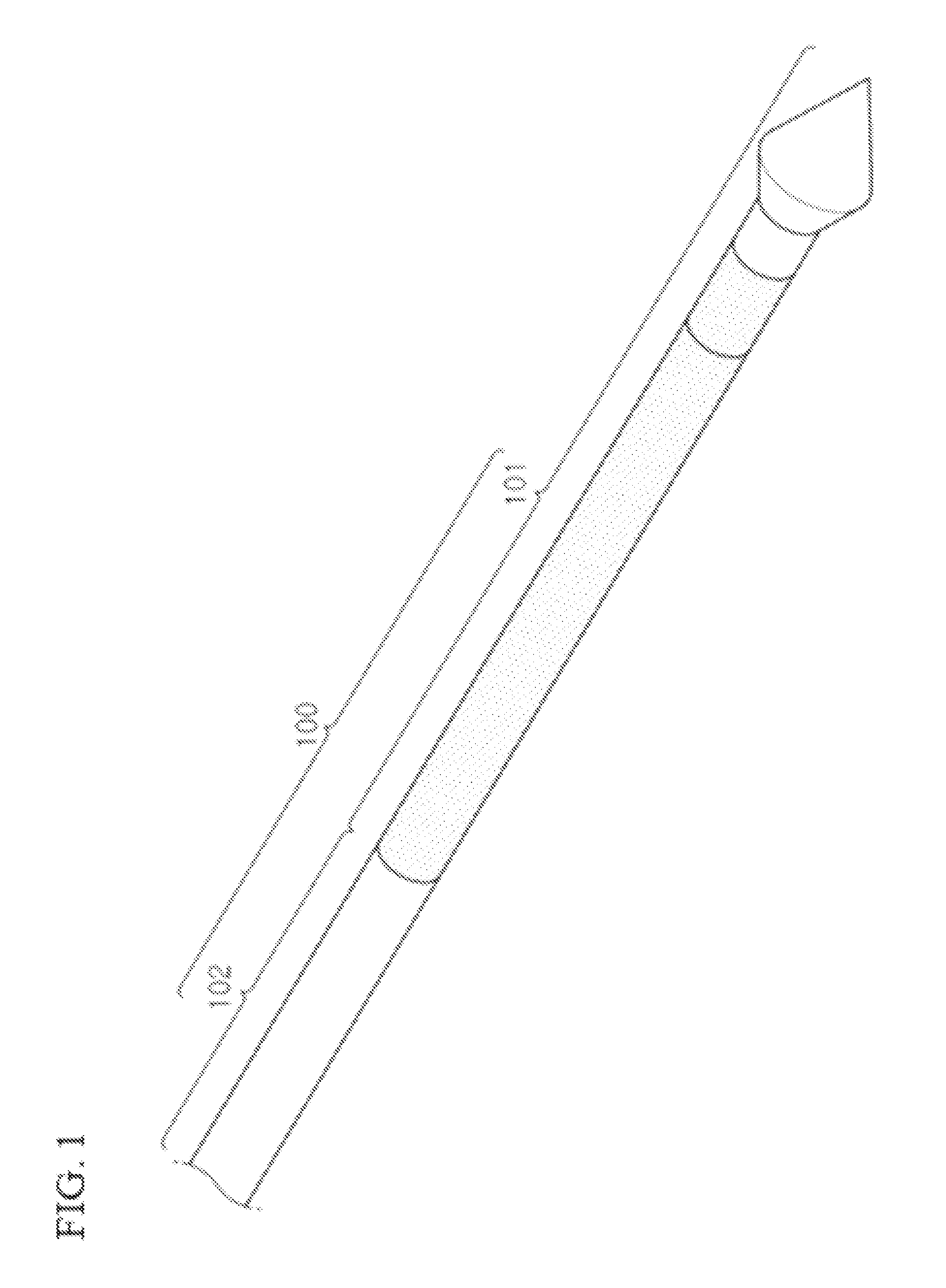Direction-controllable electrode body for selectively removing bodily tissue, and guide pipe
a controllable electrode and selective removal technology, applied in the field of electrode bodies, can solve the problems of lumbar pain, low back and radicular pain, nerve pressure, etc., and achieve the effect of controlling the position
- Summary
- Abstract
- Description
- Claims
- Application Information
AI Technical Summary
Benefits of technology
Problems solved by technology
Method used
Image
Examples
Embodiment Construction
[0093]Reference should now be made to the drawings, in which the same reference numerals are used throughout the different drawings to designate the same or similar components.
[0094]FIG. 1 is a perspective view showing a direction-controllable electrode body in accordance with an embodiment of the present invention.
[0095]With reference to FIG. 1, the direction-controllable electrode body 100 in accordance with an embodiment of the present invention comprises a flexible body 101.
[0096]When the electrode body is applied to the body, the flexible body 101 is in direct contact with the body and can be directionally controlled within the body.
[0097]To be easily inserted into the body, the electrode 100 may further comprise a rigid body connected to one end of the flexible body 101. The rigid body 102 may function to support and protect the flexible body 101. The rigid body 102 may be made of a polymer which has a high hardness or which is inserted into a stainless steel pipe conferring b...
PUM
 Login to View More
Login to View More Abstract
Description
Claims
Application Information
 Login to View More
Login to View More - R&D
- Intellectual Property
- Life Sciences
- Materials
- Tech Scout
- Unparalleled Data Quality
- Higher Quality Content
- 60% Fewer Hallucinations
Browse by: Latest US Patents, China's latest patents, Technical Efficacy Thesaurus, Application Domain, Technology Topic, Popular Technical Reports.
© 2025 PatSnap. All rights reserved.Legal|Privacy policy|Modern Slavery Act Transparency Statement|Sitemap|About US| Contact US: help@patsnap.com



